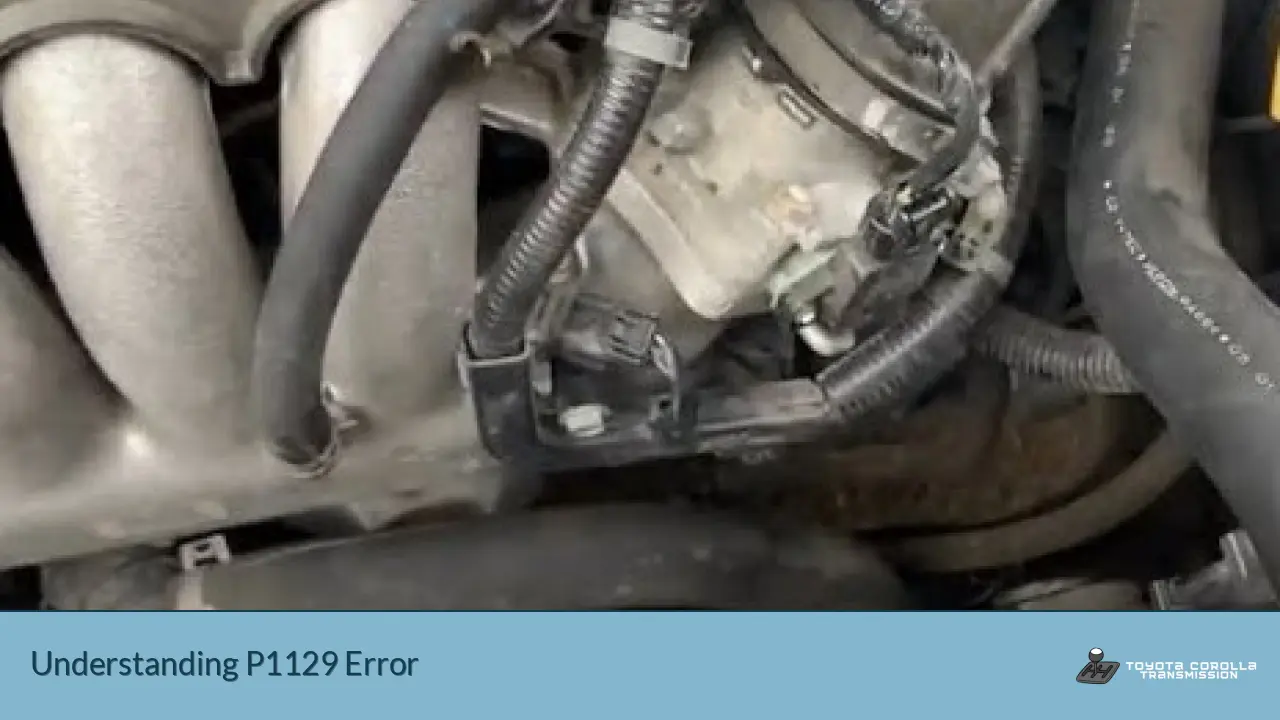The P1129 error code in Toyota vehicles indicates a malfunction in the Throttle Actuator Control (TAC) system. This issue can significantly impact engine performance and fuel efficiency, making it crucial for vehicle owners to address promptly. Let’s delve into the intricacies of this error code, its causes, and potential solutions.
| Aspect | Details | Impact |
|---|---|---|
| Definition | TAC system malfunction | Affects engine performance |
| Common Causes | Faulty throttle body, wiring issues, ECM problems | Reduced acceleration, poor fuel economy |
| Severity | Moderate to High | Can lead to more serious engine issues if ignored |
Understanding the P1129 Code
The P1129 code specifically relates to the Throttle Actuator Control system in Toyota vehicles. This system is responsible for managing the throttle opening and closing, which directly affects the engine’s air intake. When the ECM (Engine Control Module) detects an issue with this system, it triggers the P1129 code.
Symptoms of P1129
Drivers experiencing this issue may notice several symptoms:
- Illuminated Check Engine Light: Often the first sign of a problem.
- Reduced Engine Power: The vehicle may enter a “limp mode” to prevent further damage.
- Rough Idling: The engine may run unevenly when stationary.
- Poor Acceleration: Throttle response may be sluggish or inconsistent.
- Stalling: In severe cases, the engine might stall unexpectedly.
Common Causes of P1129
Several factors can contribute to the P1129 code:
- Faulty Throttle Body: The most common cause, often due to carbon buildup or electrical issues.
- Wiring Problems: Damaged or corroded wiring can disrupt signals between the throttle body and ECM.
- ECM Issues: In rare cases, the Engine Control Module itself may be malfunctioning.
- Sensor Failures: Throttle position sensors or other related sensors may be providing incorrect data.
- Software Glitches: Occasionally, a software update for the ECM may be required.
Diagnosing P1129
Proper diagnosis is crucial for effectively addressing the P1129 code. Here’s a step-by-step approach:
- Use an OBD-II Scanner: Confirm the P1129 code and check for any additional codes.
- Visual Inspection: Check the throttle body and related wiring for obvious signs of damage or wear.
- Test the Throttle Body: Use a multimeter to check the throttle body’s electrical connections and resistance.
- Inspect Sensors: Verify that all related sensors are functioning correctly.
- Check ECM Data: Use advanced diagnostic tools to review the ECM’s data streams.
Fixing the P1129 Code
Once diagnosed, several repair options are available:
Throttle Body Cleaning and Replacement
Often, a thorough cleaning of the throttle body can resolve the issue. If cleaning doesn’t work, replacement may be necessary. Always use OEM parts for replacements to ensure compatibility and reliability.
Wiring Repairs
If wiring issues are found, repair or replace the affected wiring harnesses. Ensure all connections are secure and free from corrosion.
ECM Updates
In some cases, updating the ECM’s software can resolve the P1129 code. This should be done at a dealership or by a qualified technician.
Sensor Replacement
If faulty sensors are identified, replace them with new, compatible parts. This may include the throttle position sensor or related components.
Preventing Future Occurrences
To avoid future P1129 codes:
- Regular Maintenance: Follow Toyota’s recommended maintenance schedule.
- Use Quality Fuel: Poor quality fuel can lead to carbon buildup in the throttle body.
- Address Issues Promptly: Don’t ignore warning signs or check engine lights.
- Periodic Inspections: Have your vehicle’s electrical system checked regularly.
The Importance of Professional Diagnosis
While some DIY enthusiasts may attempt to diagnose and repair P1129 issues, it’s often best to consult a professional. The complexity of modern vehicle electronics means that misdiagnosis or improper repairs can lead to more severe problems.
Long-Term Implications
Ignoring the P1129 code can lead to:
- Decreased Fuel Efficiency: A malfunctioning TAC system can significantly impact fuel economy.
- Increased Emissions: Poor throttle control can lead to higher emissions, potentially failing environmental tests.
- Engine Damage: In extreme cases, continued operation with this issue can cause engine damage.
FAQs
What does the P1129 code mean for my Toyota?
It indicates a malfunction in the Throttle Actuator Control system, affecting engine performance and efficiency.
Can I drive with the P1129 code?
While possible, it’s not recommended. The vehicle may have reduced power and could stall unexpectedly.
How much does it cost to fix a P1129 code?
Costs vary widely, from $100 for a simple cleaning to over $1000 for throttle body replacement or ECM repairs.
Is P1129 a serious code?
Yes, it can significantly impact your vehicle’s performance and should be addressed promptly.
Can I fix P1129 myself?
While some repairs like cleaning the throttle body are possible DIY tasks, professional diagnosis is recommended for accurate resolution.

